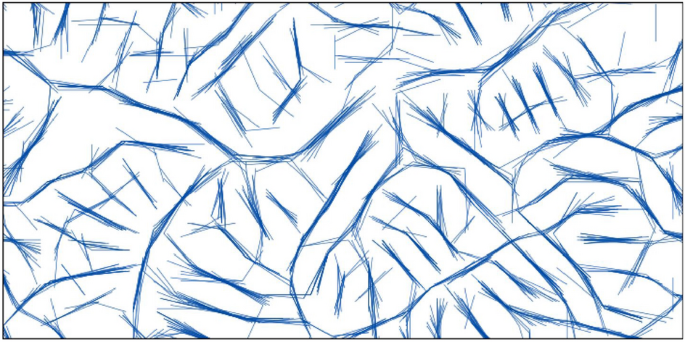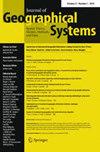加速多山影分层聚类的自动轮廓提取
IF 2.8
3区 地球科学
Q1 GEOGRAPHY
引用次数: 0
摘要
摘要:地貌线是反映地质构造中山脊或不连续面的线状特征。纹理提取不是一个简单的问题。近年来,提出了一种基于多山丘层次聚类(MHHC)的自动聚类方法;该方法基于从光栅图像中提取线条。该方法的一个重要部分是空间线段聚类,这是一个功能强大但速度相对较慢的工具。本文提出了一种改进的MHHC方法,将空间线段聚类问题作为设施定位问题加以解决。提出的修改比MHHC更快,同时不改变方法的核心。本文章由计算机程序翻译,如有差异,请以英文原文为准。

Accelerated multi-hillshade hierarchic clustering for automatic lineament extraction
Abstract The lineaments are linear features reflecting mountain ridges or discontinuities in the geological structure. Lineament extraction is not an easy problem. Recently, an automatic approach based on multi-hillshade hierarchic clustering (MHHC) has been developed; the approach is based on line extraction from a raster image. An essential part of this approach is spatial line segment clustering, a powerful but relatively slow tool. This paper presents a modification of MHHC, which solves the spatial line segment clustering as a facility location problem. The proposed modification is faster than MHHC while not changing the method’s core.
求助全文
通过发布文献求助,成功后即可免费获取论文全文。
去求助
来源期刊

Journal of Geographical Systems
GEOGRAPHY-
CiteScore
5.40
自引率
6.90%
发文量
33
期刊介绍:
The Journal of Geographical Systems (JGS) is an interdisciplinary peer-reviewed academic journal that aims to encourage and promote high-quality scholarship on new theoretical or empirical results, models and methods in the social sciences. It solicits original papers with a spatial dimension that can be of interest to social scientists. Coverage includes regional science, economic geography, spatial economics, regional and urban economics, GIScience and GeoComputation, big data and machine learning. Spatial analysis, spatial econometrics and statistics are strongly represented.
One of the distinctive features of the journal is its concern for the interface between modeling, statistical techniques and spatial issues in a wide spectrum of related fields. An important goal of the journal is to encourage a spatial perspective in the social sciences that emphasizes geographical space as a relevant dimension to our understanding of socio-economic phenomena.
Contributions should be of high-quality, be technically well-crafted, make a substantial contribution to the subject and contain a spatial dimension. The journal also aims to publish, review and survey articles that make recent theoretical and methodological developments more readily accessible to the audience of the journal.
All papers of this journal have undergone rigorous double-blind peer-review, based on initial editor screening and with at least two peer reviewers.
Officially cited as J Geogr Syst
 求助内容:
求助内容: 应助结果提醒方式:
应助结果提醒方式:


